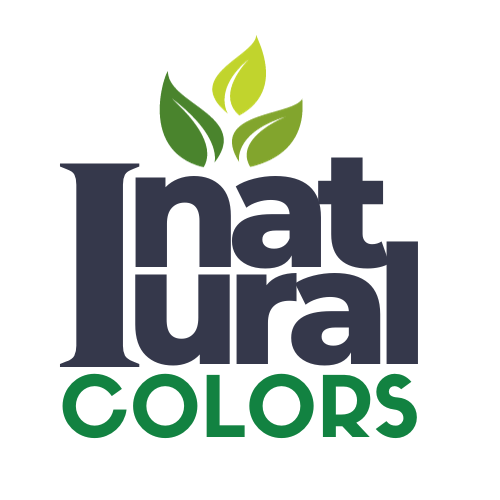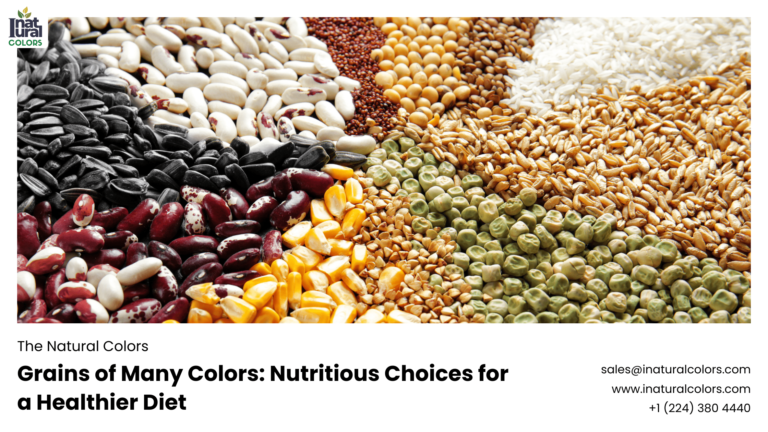Beautiful Plants For Your Interior

Natural Colors – Outline
- Introduction
- The significance of natural colors
- Overview of the journey from farm to table
- Understanding Natural Colors
- What are natural colors?
- Historical use of natural colors
- The Origins of Natural Colors
- Farming practices
- Types of natural color sources
- Cultivation of Colorful Crops
- Organic farming methods
- Sustainable practices in farming
- Harvesting Natural Colors
- Seasonal harvesting
- Techniques for preserving color integrity
- Processing Natural Colors
- Extraction methods
- Traditional vs. modern techniques
- Quality Control in Natural Color Production
- Ensuring purity and safety
- Certification and standards
- Application of Natural Colors in Food
- Culinary uses
- Benefits over artificial colors
- The Role of Natural Colors in Health
- Nutritional advantages
- Impact on wellness and diet
- Innovations in Natural Color Usage
- Technological advancements
- Future trends
- Challenges in the Natural Color Industry
- Market competition
- Regulatory hurdles
- Case Studies of Successful Natural Color Integration
- Real-world examples
- Lessons learned
- Consumer Awareness and Preferences
- Shifts in consumer behavior
- The demand for transparency
- Economic Impact of Natural Colors
- Market growth
- Economic benefits to farmers
- Conclusion
- Recap of the journey
- The future of natural colors
- FAQs
- What are natural colors?
- How are natural colors extracted?
- Are natural colors safe?
- Can natural colors be used in all foods?
- What are the environmental benefits of using natural colors?
The Journey of Natural Colors: From Farm to Table
Natural colors have been an integral part of human life for centuries. From the rich hues of turmeric and beetroot to the subtle shades of spinach and blueberries, these colors not only enhance the visual appeal of our food but also offer numerous health benefits. The journey of natural colors from farm to table is a fascinating tale of tradition, innovation, and sustainability.
Understanding Natural Colors
Natural colors are pigments derived from plants, animals, and minerals. Unlike artificial colors, which are synthesized from chemicals, natural colors are obtained from natural sources such as fruits, vegetables, flowers, and spices. Historically, these colors were used for dyeing fabrics, creating art, and enhancing the appearance of food.
The Origins of Natural Colors
The journey of natural colors begins on the farm. Farmers employ various practices to cultivate crops rich in natural pigments. The types of natural color sources are diverse, including roots like turmeric, leaves like spinach, fruits like berries, and flowers like marigolds.
Cultivation of Colorful Crops
Organic farming methods are often employed to grow crops intended for natural color extraction. These methods avoid synthetic pesticides and fertilizers, focusing instead on natural pest control and soil health. Sustainable farming practices ensure that the cultivation of these crops does not harm the environment, promoting biodiversity and soil conservation.
Harvesting Natural Colors
The harvesting of crops for natural colors is typically done at the peak of their color intensity. Seasonal harvesting ensures that the colors are vibrant and full of life. Techniques such as hand-picking and immediate processing help preserve the integrity of the pigments.
Processing Natural Colors
Once harvested, the crops undergo various extraction methods to obtain the desired pigments. Traditional techniques might include sun-drying and grinding, while modern methods can involve sophisticated machinery and technology to extract and concentrate the colors without losing their natural properties.
Quality Control in Natural Color Production
Ensuring the purity and safety of natural colors is crucial. Rigorous quality control measures, including testing for contaminants and verifying pigment concentration, are standard practices. Certification from regulatory bodies assures consumers of the quality and safety of natural color products.
Application of Natural Colors in Food
Natural colors are widely used in the culinary world to enhance the visual appeal of dishes. From vibrant smoothie bowls to naturally colored candies, the use of these colors is both aesthetic and beneficial. Unlike artificial colors, natural pigments often come with added nutritional benefits.
The Role of Natural Colors in Health
Many natural colors are rich in antioxidants, vitamins, and minerals. For example, the deep red of beetroot is due to betalains, which have anti-inflammatory properties. The green of spinach comes from chlorophyll, known for its detoxifying effects. Incorporating these colors into the diet can contribute to overall health and wellness.
Innovations in Natural Color Usage
The field of natural colors is continually evolving. Technological advancements have made it possible to extract and stabilize these pigments more efficiently. Future trends include the development of new sources of natural colors and improving the stability and intensity of existing ones.
Challenges in the Natural Color Industry
Despite the benefits, the natural color industry faces challenges. Market competition from artificial colors, regulatory hurdles, and the higher cost of production are significant barriers. However, increasing consumer awareness and demand for natural and healthy products are driving growth in this sector.
Case Studies of Successful Natural Color Integration
Many companies have successfully integrated natural colors into their products. For instance, a leading confectionery brand replaced artificial dyes with natural alternatives in their popular candies, resulting in positive consumer feedback and increased sales. These case studies demonstrate the feasibility and benefits of using natural colors in various industries.
Consumer Awareness and Preferences
There is a growing shift in consumer behavior towards natural and transparent products. Consumers are more informed and prefer products with clear labeling and natural ingredients. This demand for transparency and naturalness is shaping the market and encouraging companies to adopt natural colors.
Economic Impact of Natural Colors
The natural color market is experiencing significant growth. This growth benefits farmers who cultivate the raw materials, as well as companies that produce and sell natural color products. The economic impact is broad, contributing to rural development and promoting sustainable agricultural practices.
Conclusion
The journey of natural colors from farm to table is a testament to the harmony between nature and technology. As we move towards a more health-conscious and environmentally friendly world, the demand for natural colors will continue to rise. Embracing these vibrant hues not only enhances our food but also supports sustainable practices and promotes better health.
FAQs
What are natural colors?
Natural colors are pigments derived from natural sources such as plants, animals, and minerals, used to color food, cosmetics, and textiles.
How are natural colors extracted?
Natural colors are extracted using various methods, including traditional techniques like drying and grinding, as well as modern technological processes that ensure the pigments’ purity and concentration.
Are natural colors safe?
Yes, natural colors are generally safe and often come with added health benefits. They undergo rigorous quality control and certification to ensure their safety.
Can natural colors be used in all foods?
Natural colors can be used in a wide range of foods, but their application may vary based on the desired hue and the food’s properties. Some natural colors are more stable than others and may be better suited for certain products.
What are the environmental benefits of using natural colors?
Using natural colors promotes sustainable farming practices, reduces reliance on synthetic chemicals, and supports biodiversity. It also encourages the use of renewable resources and contributes to the overall health of the ecosystem.



